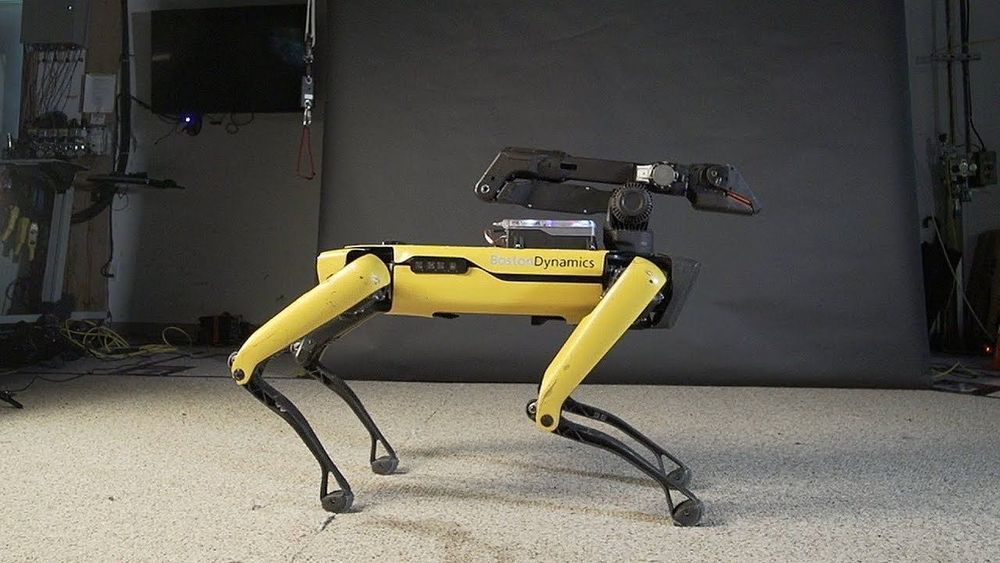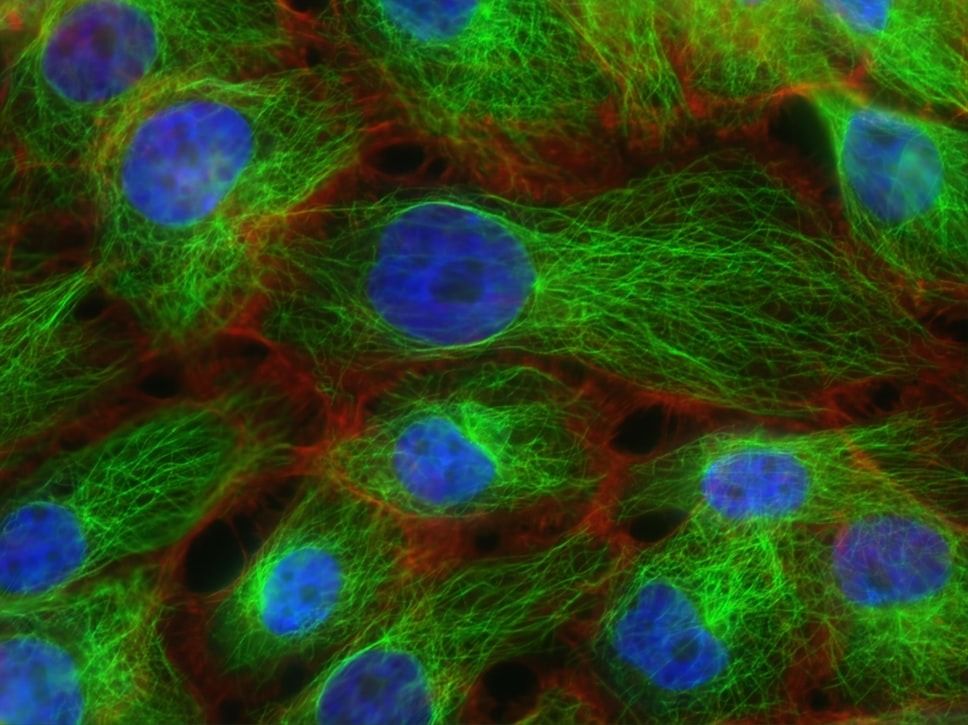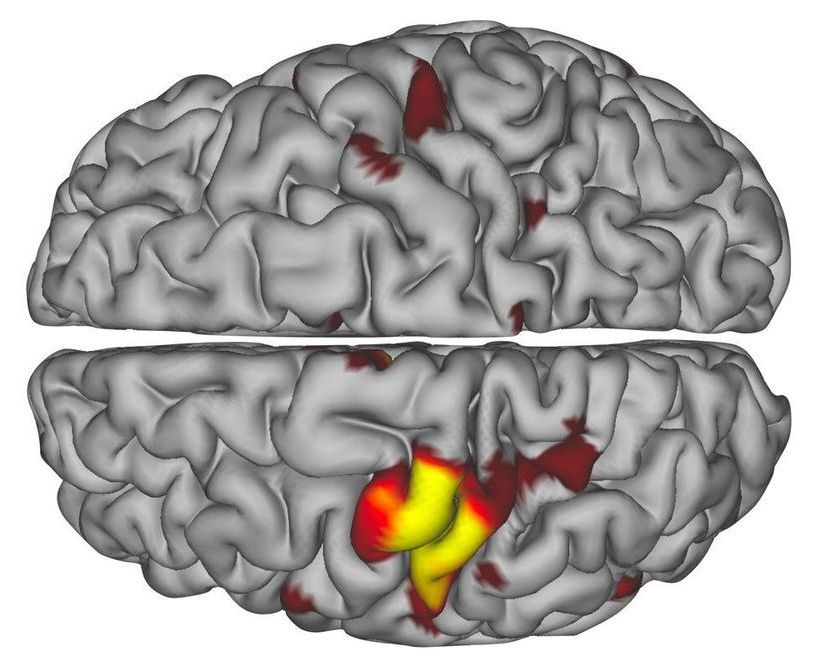Page 7447
Jun 18, 2020
Boston Dynamics’ robotic dog could be yours for a very, very high price
Posted by Brent Ellman in categories: government, robotics/AI
The Spot Explorer is likely not coming to a workplace near you. The high price point makes it impractical to all but a few institutions, like high-end construction firms, energy companies, and government agencies. But just seeing out in the world, doing more than dancing to “Uptown Funk,” is surely a sign of progress.
These viral robots have ranked up big YouTube numbers for years. Now, they’re about to start their day jobs.
Jun 18, 2020
CRISPR Could Fry All Cancer Using Newly Found T-Cell
Posted by Quinn Sena in category: biotech/medical
One of the human body’s greatest features is its natural antivirus protection. If your immune system is working normally, it produces legions of T-cells that go around looking for abnormalities like cancer cells just to gang up and destroy them. They do this by grabbing on to little protein fragments called antigens that live on the surface of the bad cells and tattle on their whereabouts to the immune system. Once the T-cells have a stranglehold on these antigens, they can release toxins that destroy the bad cell, while minimizing collateral damage to healthy cells.
This rather neat human trick doesn’t always work, however. Cancer cells sometimes mask themselves as healthy cells, or they otherwise thwart T-cell attacks by growing so many antigens on their surface that the T-cells have no place to grab onto.
Medical science has come up with a fairly new method of outfoxing these crafty cancer cells called CAR T-cell therapy. Basically, they withdraw blood from the patient, extract the T-cells, and replace the blood. The T-cells are sent off to a CRISPR lab, where they get injected with a modified, inactive virus that introduces a new gene which causes the T-cells to sprout a little hook on their surface.
Jun 18, 2020
Biochemical Quantitative Phase Imaging Delivers Unprecedented 3D Images of Live Cells Plus Details of Molecules Inside
Posted by Genevieve Klien in categories: biotech/medical, chemistry
No damage caused by strong light, no artificial dyes or fluorescent tags needed.
The insides of living cells can be seen in their natural state in greater detail than ever before using a new technique developed by researchers in Japan. This advance should help reveal the complex and fragile biological interactions of medical mysteries, like how stem cells develop or how to deliver drugs more effectively.
“Our system is based on a simple concept, which is one of its advantages,” said Associate Professor Takuro Ideguchi from the University of Tokyo Research Institute for Photon Science and Technology. The results of Ideguchi’s team were published recently in Optica, the Optical Society’s research journal.
Jun 18, 2020
Prisoners Are Using Smuggled Cellphones to Show the Coronavirus Nightmare Behind Bars
Posted by Quinn Sena in categories: biotech/medical, law enforcement, mobile phones

The coronavirus has killed dozens of federal prisons and infected more than 6,000. Prisoners say they have been stuck in grim conditions that make social distancing impossible. To support their claims, some prisoners have used contraband cell phones that have been smuggled into prisons to post videos on Facebook and other social media sites.
VICE News contacted one of the prisoners, 34-year-old Aaron Campbell, held at a federal prison in Ohio, who said he was punished for making his video by being sent to solitary confinement. In a letter, Campbell said officials told him he would not face additional discipline if he issued a statement saying the video was fake. He refused. (The BOP did not respond to questions about his allegations.)
Jun 17, 2020
$1bn to save the ocean | The Economist
Posted by Derick Lee in category: sustainability

We asked Sir David Attenborough and four other leading thinkers on ocean conservation how they would invest $1bn to protect the ocean. Some of their answers may surprise you. https://www.woi.economist.com/
For more from Economist Films visit: http://films.economist.com/
Check out The Economist’s full video catalogue: http://econ.st/20IehQk
Like The Economist on Facebook: https://www.facebook.com/TheEconomist/
Follow The Economist on Twitter: https://twitter.com/theeconomist
Follow us on Instagram: https://www.instagram.com/theeconomist/
Follow us on Medium: https://medium.com/@the_economist
Jun 17, 2020
Follow the road to launch for our next mission to the Red Planet, the Mars 2020 Perseverance rover
Posted by Alberto Lao in categories: alien life, climatology, robotics/AI

Administrator Jim Bridenstine, leadership and a panel of scientists and engineers will preview the upcoming mission at 2 p.m. EDT on Wednesday, June 17. Submit your questions during the briefing using #AskNASA!
Perseverance is a robotic scientist that will search for signs of past microbial life on Mars and characterize the planet’s climate and geology. It will also collect rock and soil samples for future return to Earth and pave the way for human exploration of the Red Planet. The mission is scheduled to launch from Space Launch Complex 41 at NASA’s Kennedy Space Center in Florida at 9:15 a.m. EDT July 20. It will land at Mars’ Jezero Crater on Feb. 18, 2021. #CountdownToMars
Jun 17, 2020
Previously undetected brain pulses may help circuits survive disuse, injury
Posted by Genevieve Klien in categories: biotech/medical, neuroscience
A neuroscientist’s neon pink arm cast led him and fellow researchers at Washington University School of Medicine in St. Louis to discover previously undetected neuronal pulses in the human brain that activate after an immobilizing illness or injury.
Jun 17, 2020
Observation of excess events in the XENON1T dark matter experiment
Posted by Genevieve Klien in categories: cosmology, particle physics
Scientists from the international XENON collaboration, an international experimental group including the Kavli Institute for the Physics and Mathematics of the Universe (Kavli IPMU), University of Tokyo; the Institute for Cosmic Ray Research (ICRR), University of Tokyo; the Institute for Space-Earth Environmental Research (ISEE), Nagoya University; the Kobayashi-Maskawa Institute for the Origin of Particles and the Universe (KMI), Nagoya University; and the Graduate School of Science, Kobe University, announced today that data from their XENON1T, the world’s most sensitive dark matter experiment, show a surprising excess of events. The scientists do not claim to have found dark matter. Instead, they have observed an unexpected rate of events, the source of which is not yet fully understood. The signature of the excess is similar to what might result from a tiny residual amount of tritium (a hydrogen atom with one proton and two neutrons), but could also be a sign of something more exciting—such as the existence of a new particle known as the solar axion or the indication of previously unknown properties of neutrinos.
XENON1T was operated deep underground at the INFN Laboratori Nazionali del Gran Sasso in Italy, from 2016 to 2018. It was primarily designed to detect dark matter, which makes up 85% of the matter in the universe. So far, scientists have only observed indirect evidence of dark matter, and a definitive, direct detection is yet to be made. So-called WIMPs (Weakly Interacting Massive Particles) are among the theoretically preferred candidates, and XENON1T has thus far set the best limit on their interaction probability over a wide range of WIMP masses. In addition to WIMP dark matter, XENON1T was also sensitive to different types of new particles and interactions that could explain other open questions in physics. Last year, using the same detector, these scientists published in Nature the observation of the rarest nuclear decay ever directly measured.
The XENON1T detector was filled with 3.2 tons of ultra-pure liquefied xenon, 2.0 t of which served as a target for particle interactions. When a particle crosses the target, it can generate tiny signals of light and free electrons from a xenon atom. Most of these interactions occur from particles that are known to exist. Scientists therefore carefully estimated the number of background events in XENON1T. When data of XENON1T were compared to known backgrounds, a surprising excess of 53 events over the expected 232 events was observed.
Type 3000.0 tion is beyond the Universeverse. The only things that might become one of these are hings beyond the Universeverse. In fact, it allows you to control things beyond imagination and knowledge of yours. To make it short, it’s IMPOSSIBLE to understand the powers of such type of civilization.
Retrieved from “https://beyond-universe.fandom.com/wiki/Type_Infinite_Civilization?oldid=21451”.















